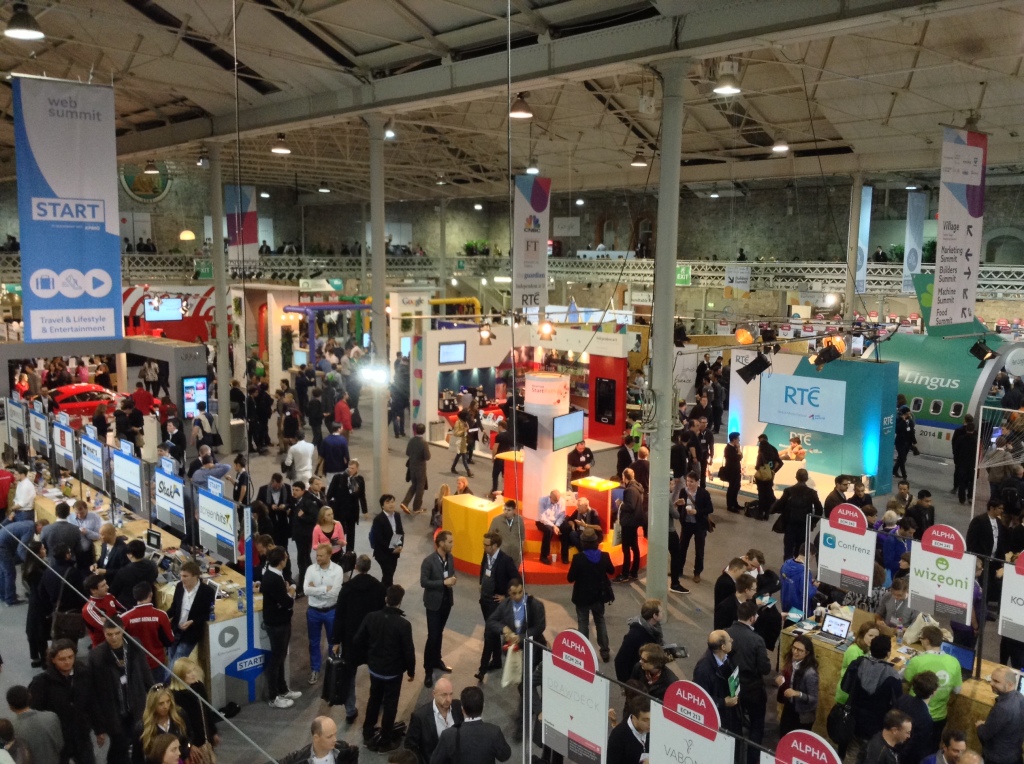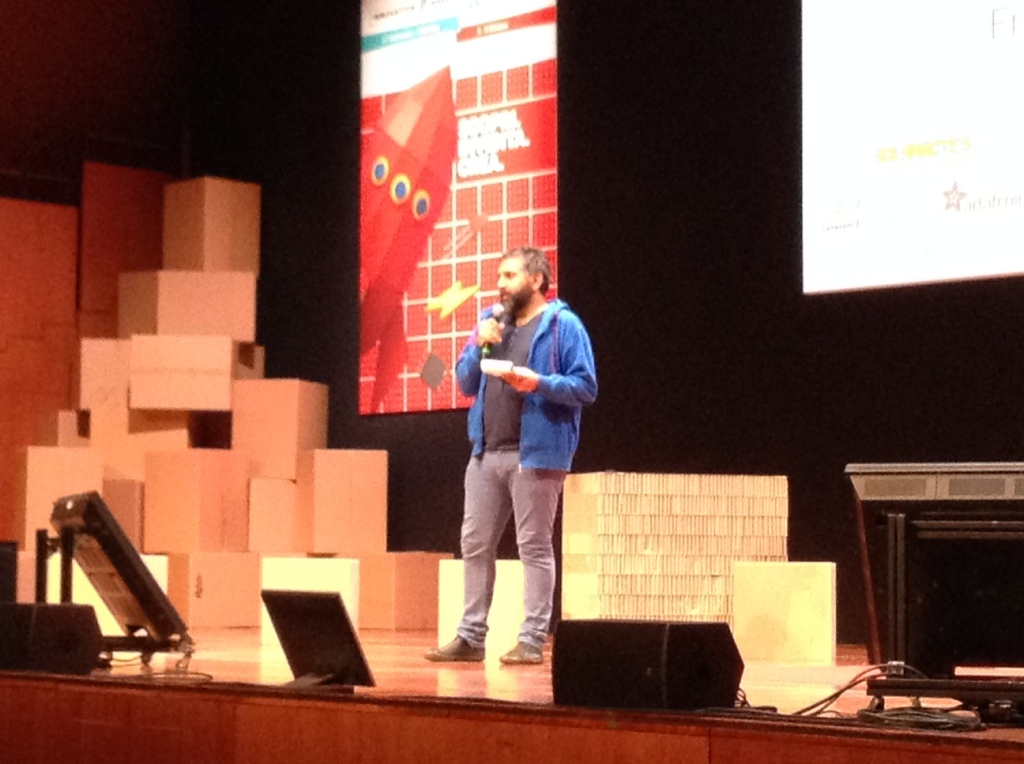Technology conference Web Summit was held in Dublin from 4th to 6th November, an impressively huge and very well organized tech event, where around 20,000 attendees from more than 100 countries met. During three intense days, we found gathered a great amount of insightful speakers sharing their ideas, enthusiastic startups willing to met investors, as well as countless workshops, roundtables, network sessions, presentation pitches, demos, stands, and also night parties.
Actually, the event featured several summits happening at the same time: Builders, Enterprise, Food, Machine, Marketing, Music, Sport, amongst others. The first day, we mainly attended the Machine Summit, where a line-up of noted speakers discussed about topics like the Internet of Things, smart cities, wearables, robotics, 3D printing and human-machine interaction.

From Hollywood to the real world
In the morning, one of the first speakers that impressed us was the interface designer John Underkoffler, pretty widely known for his work as science advisor on SF films like “Iron Man” and “Minority Report”. This MIT Media Lab alumni gave us a visionary glimpse of where human-machine interaction is heading. It looks like definitely you can forget your mouse, keyboard and other devices as 3D space UI is becoming the emerging trend. Oblong Industries, the company where Underkoffler serves as a CEO, has been working since more than a decade to make real the cool gesture-based data interface technology featured in the film “Minority Report”, and they are almost there with G-Speak, an spacial operating environment, whose first commercial application is the conference room solution Mezzanine.
Continue reading “Dublin Web Summit 2014 Day 1: Machine stage”





